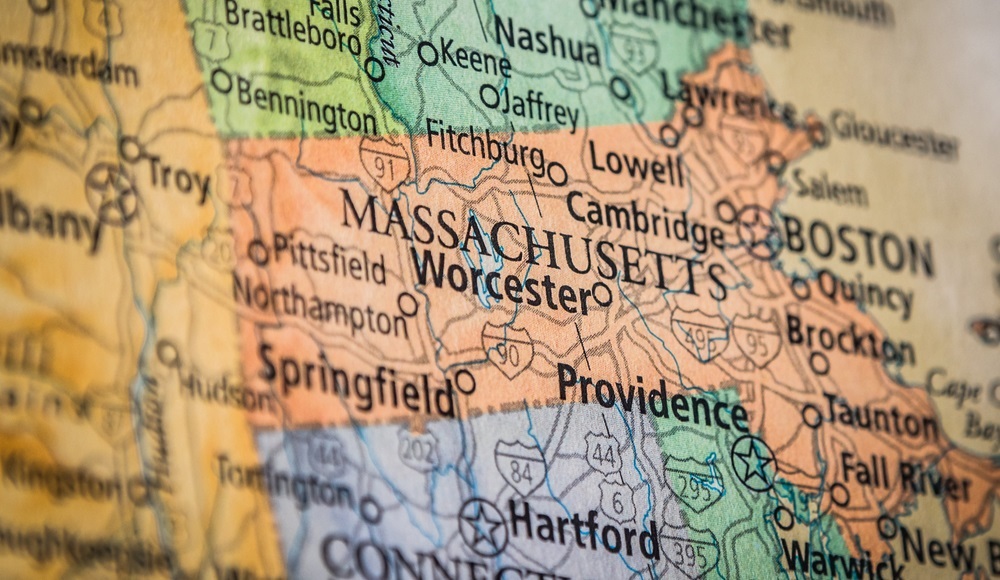![]() The year 2020 will be remembered as a year of great upheaval in the United States, with so many lives and communities upended by the intersecting crises of COVID-19 and systemic racism. But of course, there is another crisis woven into the fabric of this incredibly challenging year — rising rates of gun violence in urban communities across the country.
The year 2020 will be remembered as a year of great upheaval in the United States, with so many lives and communities upended by the intersecting crises of COVID-19 and systemic racism. But of course, there is another crisis woven into the fabric of this incredibly challenging year — rising rates of gun violence in urban communities across the country.
This troubling trend is also being felt in Massachusetts, a state known for having one of the strongest packages of gun-related legislation in the country. While we do have more regulations on gun ownership in place than almost any other state, we still experience far too many losses and far too much trauma as a result of firearms. Every shooting results in a ripple effect of emotional pain for all the individuals involved in the shooting, for their families and also for their communities.

Ruth Zakarin
If we want to move the needle on gun violence, we must zero in on root causes and support the communities disparately impacted by this violence. We must focus on the trauma that surrounds gun violence, not just the guns themselves. And we must also push back on public officials that exacerbate the pain of gun violence through their words and policy recommendations.
Recent comments from Massachusetts leaders in law enforcement compel us to do just that. At a roundtable discussion with police chiefs on Oct. 21, U.S. Attorney Andrew Lelling noted the alarming rise in gun violence in Massachusetts cities. In Boston alone fatal shootings are up 58% in 2020 and nonfatal shootings 38%.
While we certainly share in the concern about the uptick of violence, we take great issue with how Attorney Lelling and attending law enforcement leaders are identifying and talking about the driving forces of the violence. Decarceration — efforts to manage the spread of COVID in our prisons and jails through decreasing the incarcerated population — is not to blame.
There has been no evidence linking decarceration to increased gun violence. In fact, decarceration efforts in Massachusetts have been sluggish at best, while rates of violence have increased sharply. Additionally, several participants linked the rise in violence with the current and necessary conversation about police accountability. Of particular note was Attorney Lelling’s statement that a “tremendous amount of anti-police rhetoric” has “emboldened street-level offenders.”
High joblessness, poverty are factors
This rhetoric is misguided and it’s not grounded in the emerging research about increased rates of gun violence. It is also dangerous, as it assigns blame to the very communities most affected by systemic racism, mass incarceration and police violence.
Gun violence is a public health crisis, one that is largely driven by racial and economic disparity. Recent research from Northeastern University found that counties with high unemployment or high rates of poverty have higher rates of gun homicide. Meanwhile, Massachusetts had the steepest unemployment rate in the country in June 2020, peaking at 17.7%, as compared to 2.8% in March.
Research published in Social Science and Medicine also shows that communities subjected to discriminatory housing practices like redlining have higher rates of gun violence. Factors such as inequities in health care, housing policies, access to wealth and educational opportunities are ever-present in urban communities of color and are correlated with higher rates of violence. They are also at the root of COVID’s devastating impact on those very same communities.
Attorney Lelling and others ignore this data and without evidence look to blame gun violence on the anti-police brutality movement. This false narrative is harmfully misleading and completely misses our country’s long history of racist policymaking and the pandemic’s current effect on already vulnerable communities.
For more information on Youth Gun Violence Prevention, go to
► JJIE Resource Hub | Youth Gun Violence Prevention
Urban communities of color have been profoundly impacted by the intersecting public health crises of COVID-19 and gun violence. These crises will not be solved by increased criminal justice responses, or by pointing fingers at the activists working to address abusive and racist policing practices.
We must instead focus energy and resources on addressing those root causes of violence. We must invest in economic and social infrastructure that brings more stability to the communities devastated by the pandemic. We must ensure funding for violence intervention programs that are community-based and -led. We must understand the origins of the guns that are flooding urban communities and fully analyze data collected from guns recovered after violent crimes. We must invest in youth proactively, not just incarcerate them reactively. It also stands to reason that a comprehensive and just COVID response IS gun violence prevention and we should embrace it as such.
At the Massachusetts Coalition to Prevent Gun Violence, we are working closely with community members, legislators and our member organizations to advance legislation that will mitigate the impact of guns in our society. We are deeply committed to promoting data-driven policies and practices that focus on prevention, juvenile justice reform, police accountability and community-based responses to violence. We believe that punitive measures are not the answer.
We will continue to push back on leaders who advocate for increased carceral responses to violence. Investment in our communities and in our youth will not only help put an end to gun violence, it will also create a support system for marginalized communities where the ripples of trauma are deeply felt.
Ruth Zakarin is executive director of the Massachusetts Coalition to Prevent Gun Violence.

Pingback: Gun Violence Prevention and Racial Justice: An Interview with Judy Schechtman – What We're Talking About: Conversations about Racial Justice and Anti-Racism
A gun is an inanimate object. You can take a fully loaded 44 magnum with a hair trigger, cock the hammer, lay it on a table and nothing will happen. The powder will go bad and it will rust solid without harming a fly. It takes a human being acting on their own motivations to use it in a violent way.